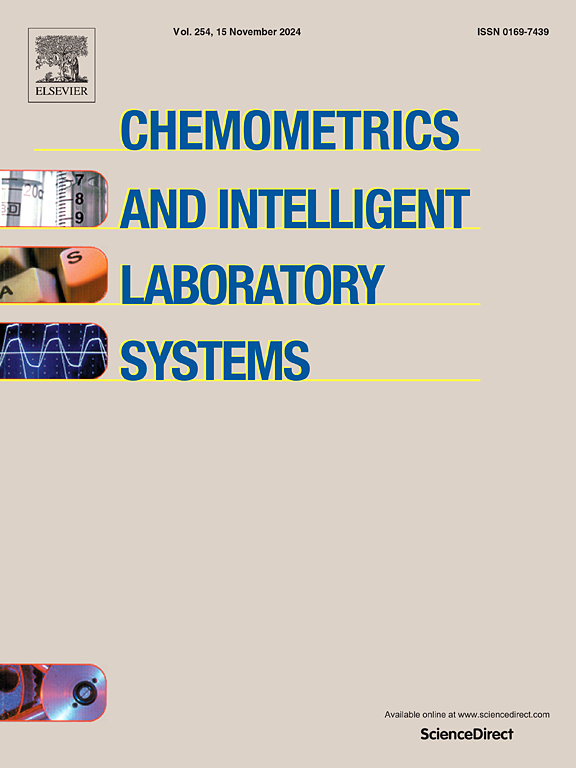Use of measurement uncertainty in conformity assessment and process capability indices in quality evaluation of pharmaceutical manufacturing processes
IF 3.8
2区 化学
Q2 AUTOMATION & CONTROL SYSTEMS
Chemometrics and Intelligent Laboratory Systems
Pub Date : 2025-06-14
DOI:10.1016/j.chemolab.2025.105470
引用次数: 0
Abstract
The pharmaceutical industry operates under strict regulatory standards to ensure high-quality, safe, and effective products. Several key indices and metrics are employed to ensure that the pharmaceutical industry operates according to these standards, with process capability indices ( and ) being the most widely utilized. Regular monitoring and analysis of this metric helps organizations maintain compliance, improve processes, and ultimately safeguard public health. Since the traditional conformity assessment approach (i.e., the simple acceptance rule) does not explicitly consider measurement uncertainty, this study proposes measurement capability indices, and analogous to the process capability indices and , but based on the measurement uncertainty. The index was applied to evaluate the conformity of 750 mg paracetamol tablets. The results indicated that while 99.9 % of the reference drug product lots were compliant, only 68.02 % of the generic drug product lots met these specifications. Furthermore, Monte Carlo simulations estimated a consumer risk of 4.76 % for accepting non-compliant lots and a producer risk of 6.82 % for incorrectly rejecting compliant lots. By combining and strengthens quality control by enabling more conservative acceptance limits and providing a robust statistical basis for conformity decisions, thereby minimizing the risk of erroneous lot acceptance or rejection. This approach reduces risks for consumers and producers, enhances reliability in pharmaceutical production, and provides a precise tool to ensure product quality and safety.

测量不确定度在合格评定中的应用及过程能力指标在药品生产过程质量评价中的应用
制药业在严格的监管标准下运作,以确保高质量、安全和有效的产品。为了确保制药行业按照这些标准运作,采用了几个关键指标和指标,其中使用最广泛的是过程能力指标(Cp和Cpk)。定期监视和分析该指标有助于组织维护合规性、改进流程并最终保护公共健康。由于传统的合格评定方法(即简单验收规则)没有明确考虑测量不确定度,本研究提出了类似于过程能力指标Cp和Cpk的测量能力指标Cm和Cmk,但以测量不确定度为基础。采用Cmk指数对750 mg扑热息痛片进行符合性评价。结果表明,99.9%的标准药品批次符合标准,而68.02%的仿制药批次符合标准。此外,蒙特卡罗模拟估计,接受不合规批次的消费者风险为4.76%,而错误拒绝合规批次的生产者风险为6.82%。通过结合Cmk和Cpk加强质量控制,实现更保守的接受限制,并为合格决策提供可靠的统计基础,从而最大限度地减少错误批次接受或拒绝的风险。这种方法降低了消费者和生产者的风险,提高了药品生产的可靠性,并提供了确保产品质量和安全的精确工具。
本文章由计算机程序翻译,如有差异,请以英文原文为准。
求助全文
约1分钟内获得全文
求助全文
来源期刊
CiteScore
7.50
自引率
7.70%
发文量
169
审稿时长
3.4 months
期刊介绍:
Chemometrics and Intelligent Laboratory Systems publishes original research papers, short communications, reviews, tutorials and Original Software Publications reporting on development of novel statistical, mathematical, or computer techniques in Chemistry and related disciplines.
Chemometrics is the chemical discipline that uses mathematical and statistical methods to design or select optimal procedures and experiments, and to provide maximum chemical information by analysing chemical data.
The journal deals with the following topics:
1) Development of new statistical, mathematical and chemometrical methods for Chemistry and related fields (Environmental Chemistry, Biochemistry, Toxicology, System Biology, -Omics, etc.)
2) Novel applications of chemometrics to all branches of Chemistry and related fields (typical domains of interest are: process data analysis, experimental design, data mining, signal processing, supervised modelling, decision making, robust statistics, mixture analysis, multivariate calibration etc.) Routine applications of established chemometrical techniques will not be considered.
3) Development of new software that provides novel tools or truly advances the use of chemometrical methods.
4) Well characterized data sets to test performance for the new methods and software.
The journal complies with International Committee of Medical Journal Editors'' Uniform requirements for manuscripts.

 求助内容:
求助内容: 应助结果提醒方式:
应助结果提醒方式:


